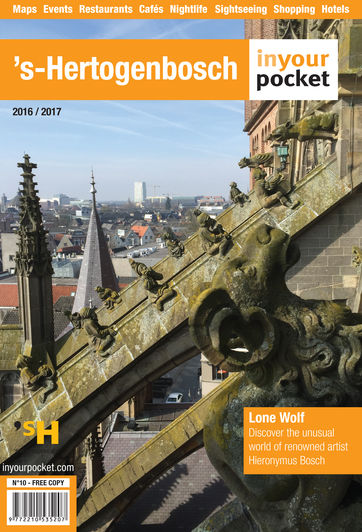Never Again: Herzogenbusch Concentration Camp
more than a year agoA visit to the national monument of Herzogenbusch Concentration Camp is a moving experience you won't soon forget. Today only a small part of the camp has been preserved, but at the height of its brutality it covered an area of 350,000 square meters. There's a memorial centre and museum with permanent and temporary exhibitions, a preserved section of the old camp and, perhaps most chillingly, an execution place where prisoners were shot.
A guided tour
Although you can take in the barbarus sights on your own, we recommend a guided tour. We had the pleasure of following Frans van Rijswijk, who guided a group of about fifteen people including ourselves one afternoon. It's deadly quiet when Frans speaks, because everybody needs a moment to let the horrifying facts sink in.
A visit to the rebuilt barracks is impressive to say the least. It's a copy of one of the many barracks that stood here during the World War II. Frans tells us about the lack of privacy, except at the latrines. “No German or guard ever came there to check it out. They were forewarned – it stank like a polecat. For prisoners this space was ideal for exchanging the latest war news with newcomers.”
In the dormitory you can find the uncomfortable, much too narrow bunk beds stacked three beds high, row after row. Prisoners had to sleep on hard slats covered with a thin gunnysack filled with hay. The blanket, if you can call it that, was not sufficient for getting through the cold winter nights. “If you slept on the bottom bunk, tough luck. Not just because of the hay that fluttered down little by little, but also because the prisoners sometimes defecated in their beds.”
In the evening, prisoners received a meagre meal, supplemented by a single chunk of bread that was supposed to serve as breakfast for the next day.
According to our guide Frans van Rijswijk, “most people ate it immediately. If you hid it beneath your pillow, chances were that it would be stolen.”
During World War II, Herzogenbusch Concentration Camp was the only SS concentration camp outside of Nazi Germany. In total, at least 31,000 people had been imprisoned in the camp between January 1943 and September 1944 for shorter or longer durations. Apart from Jews these included, amongst others, Roma (gypsies), resistance activists and Jehovah’s witnesses. Of these people, 421 children, women and men died in the camp from hunger, disease, and maltreatment; 329 prisoners were shot just outside the camp.
But for the majority of the prisoners, Herzogenbusch Concentration Camp was an intermediate stop. From here they were transported to other camps, which, in most cases, meant death.
A dubious birthday gift
In the sanctuary there are signs with the names of those who died. On the floor stands a portrait of a teenage boy. Our guide Frans takes hold of the picture and shows the face of the teenager to the group: “This is Jan Herberts, who, together with his friends, started a small resistance group in Arnhem in 1943. The boys delivered illegal newspapers and supported people who were in hiding in the neighbourhood. In August 1944 things went wrong, and Jan was arrested and locked up in the bunker at Herzogenbusch Concentration Camp.
Because he was seventeen and not old enough to be executed, the Germans waited for him to turn eighteen. One day after his birthday Jan stood before the firing squad.”
Cruel and unusual
This is one of the insane stories that may touch you deeply. Just like the camp's child monument, the crematorium and one of the lowest points in the camp’s history: the bunker drama, where a minor insurgence of some of the camp’s female prisoners led to a disproportionate punishment.
“Camp commander Grünewald put as many women as possible in one single prison cell,” says Frans van Rijswijk. “That meant that 74 women were packed together for a whole night in a room of nine square meters with hardly any ventilation. Ten women died, many others never got over it.”
Visiting the national monument of Herzogenbusch Concentration Camp is by no means cheerful. But it isn’t meant to be. For a brief moment you're given a glimpse of the misery that thousands of unfortunate people experienced in this bleak concentration camp. That we may never forget it...





Comments